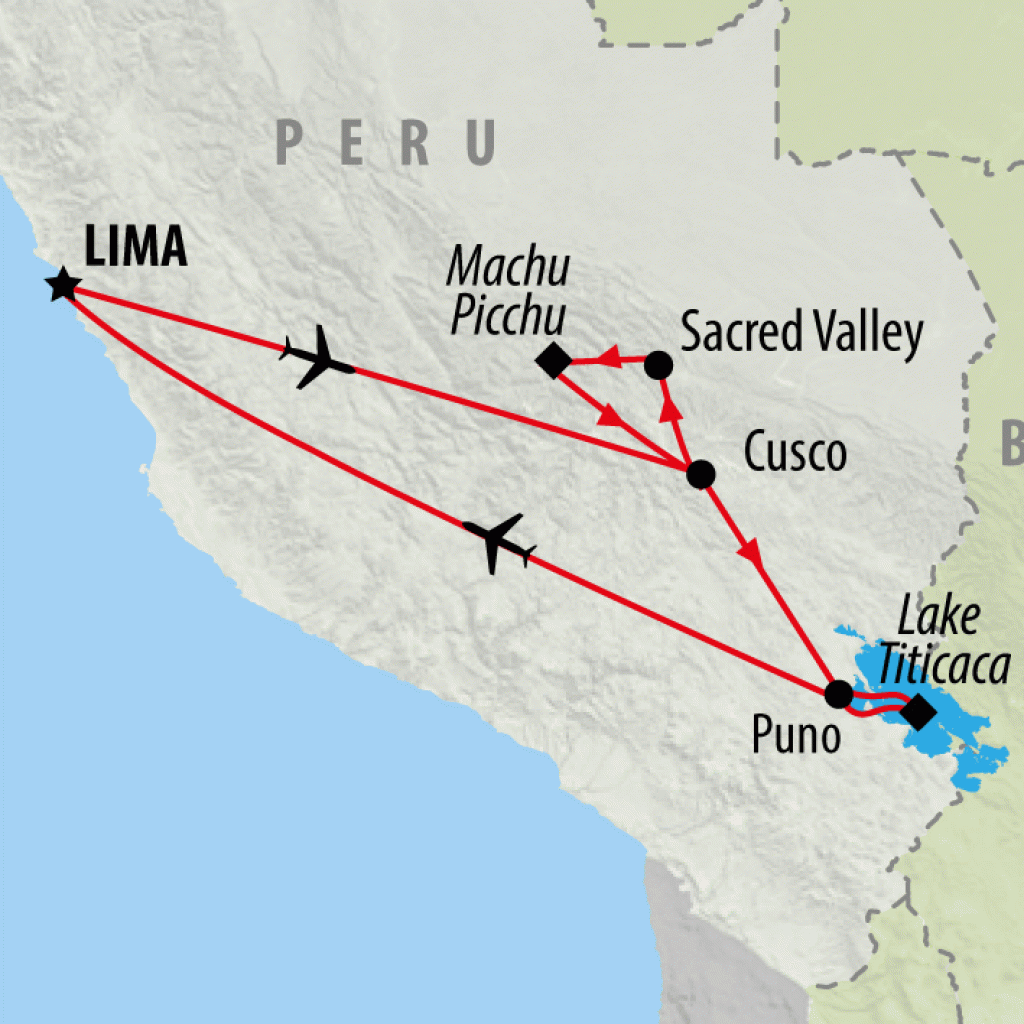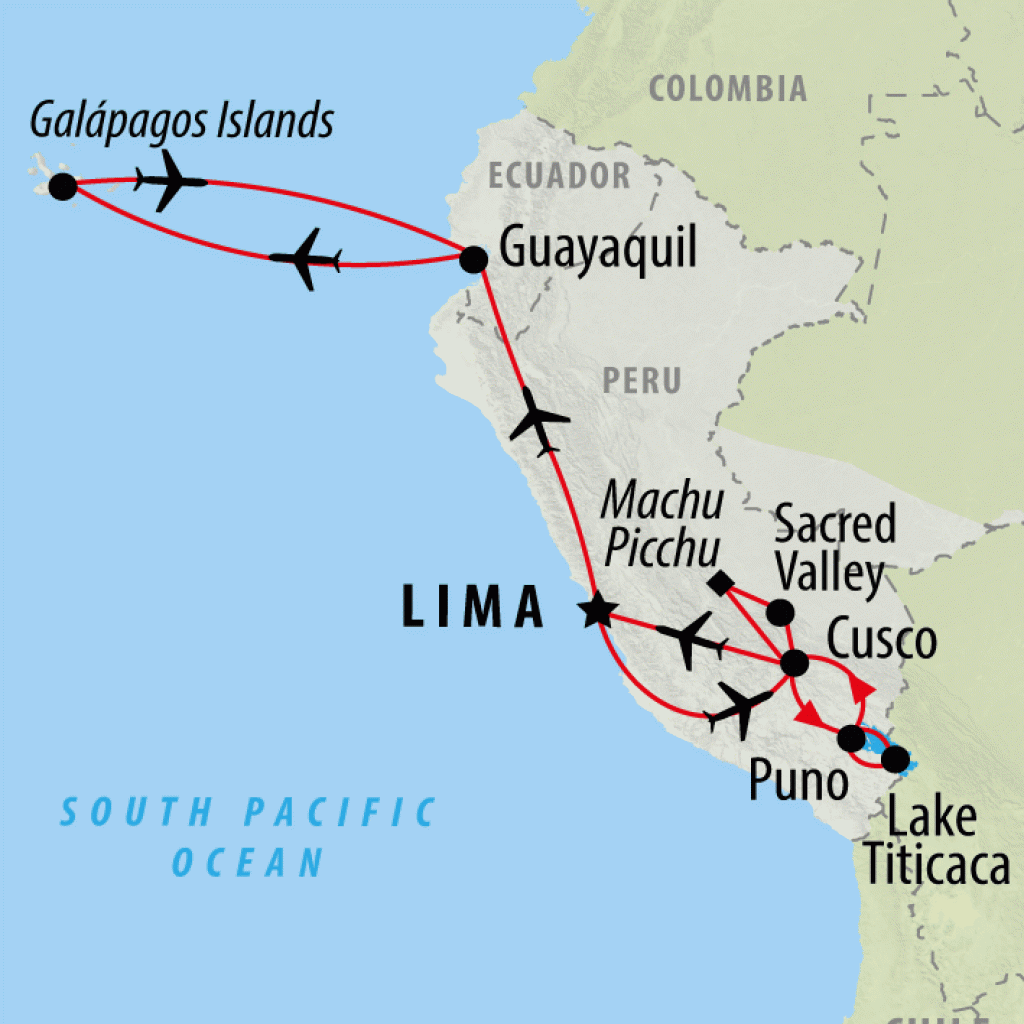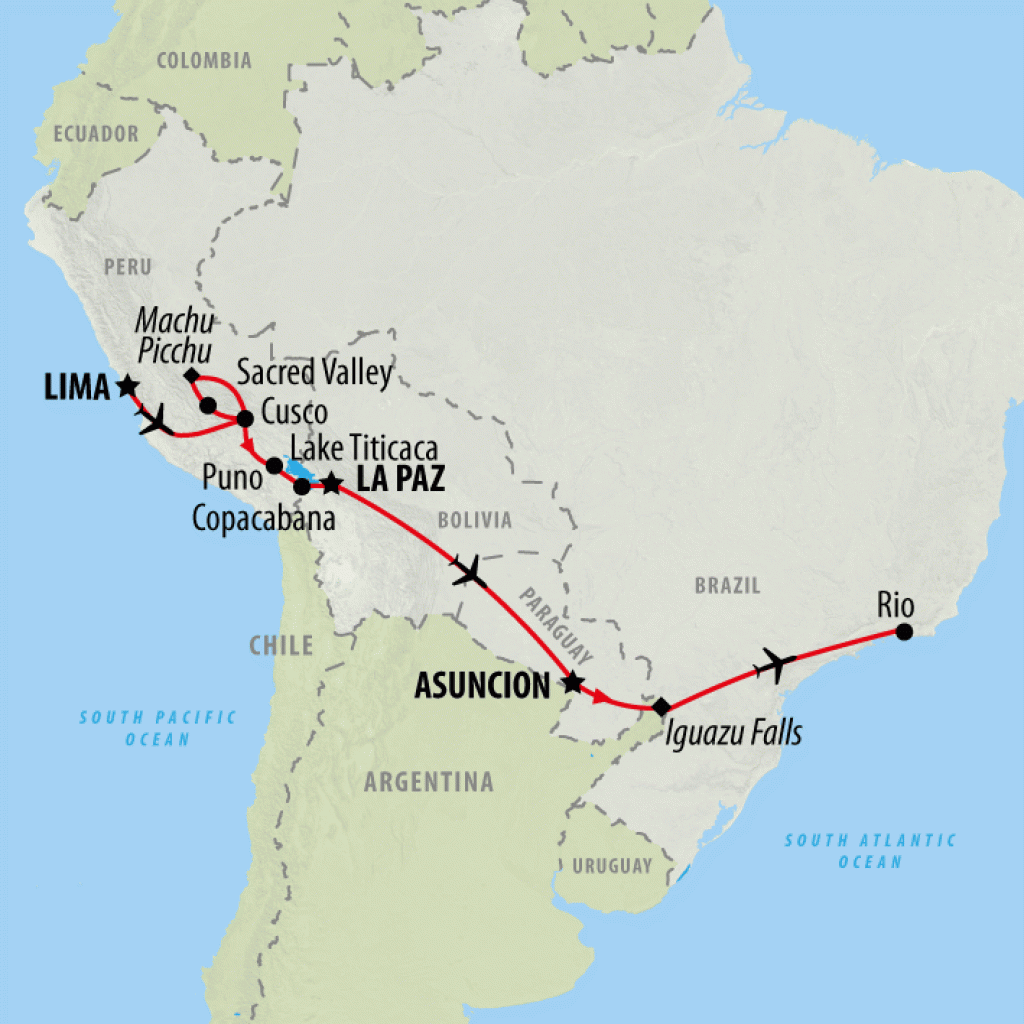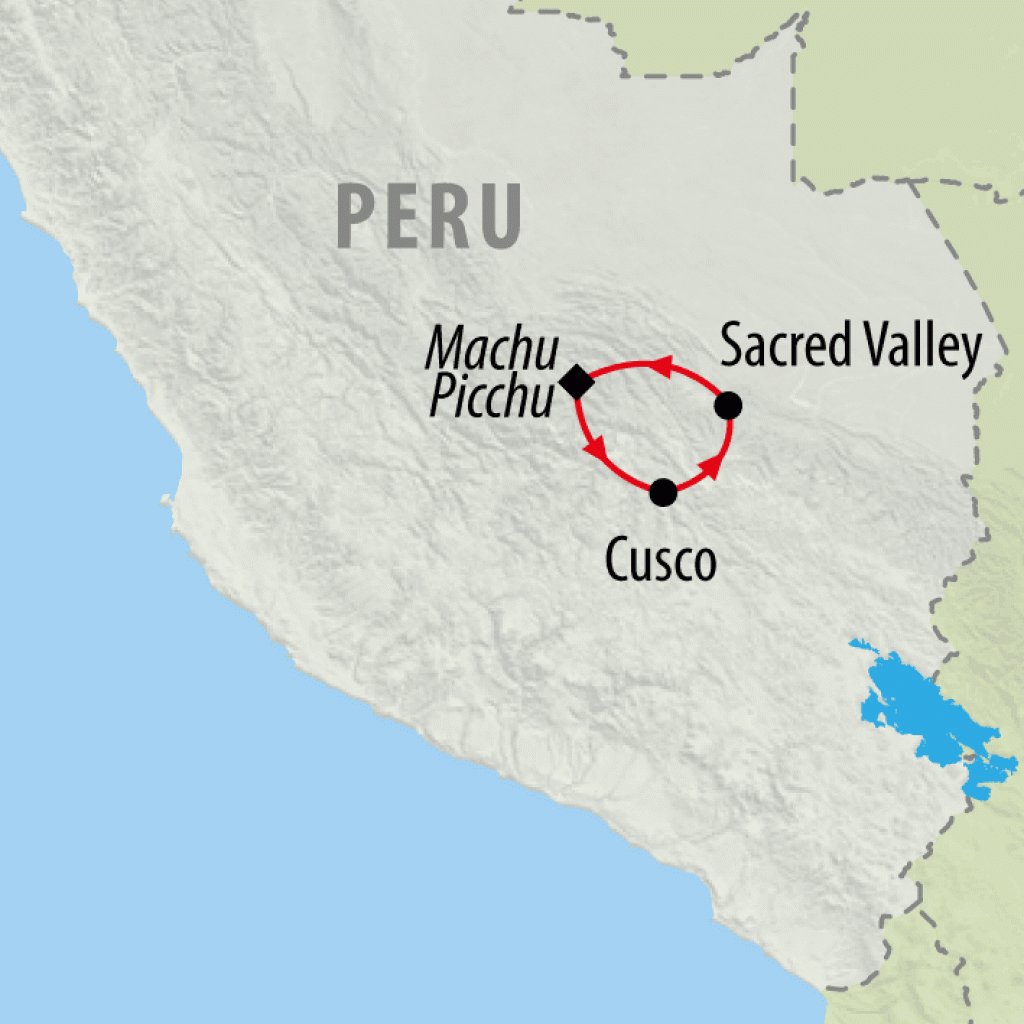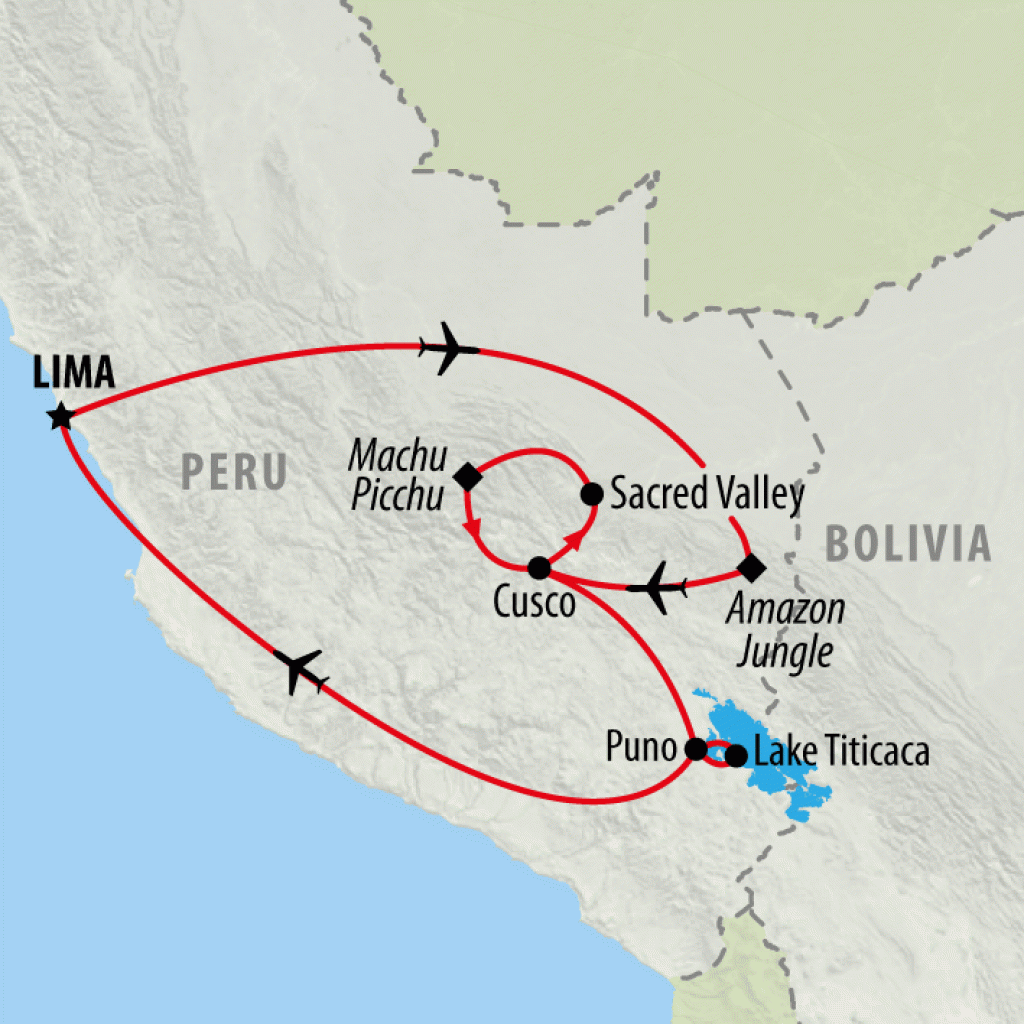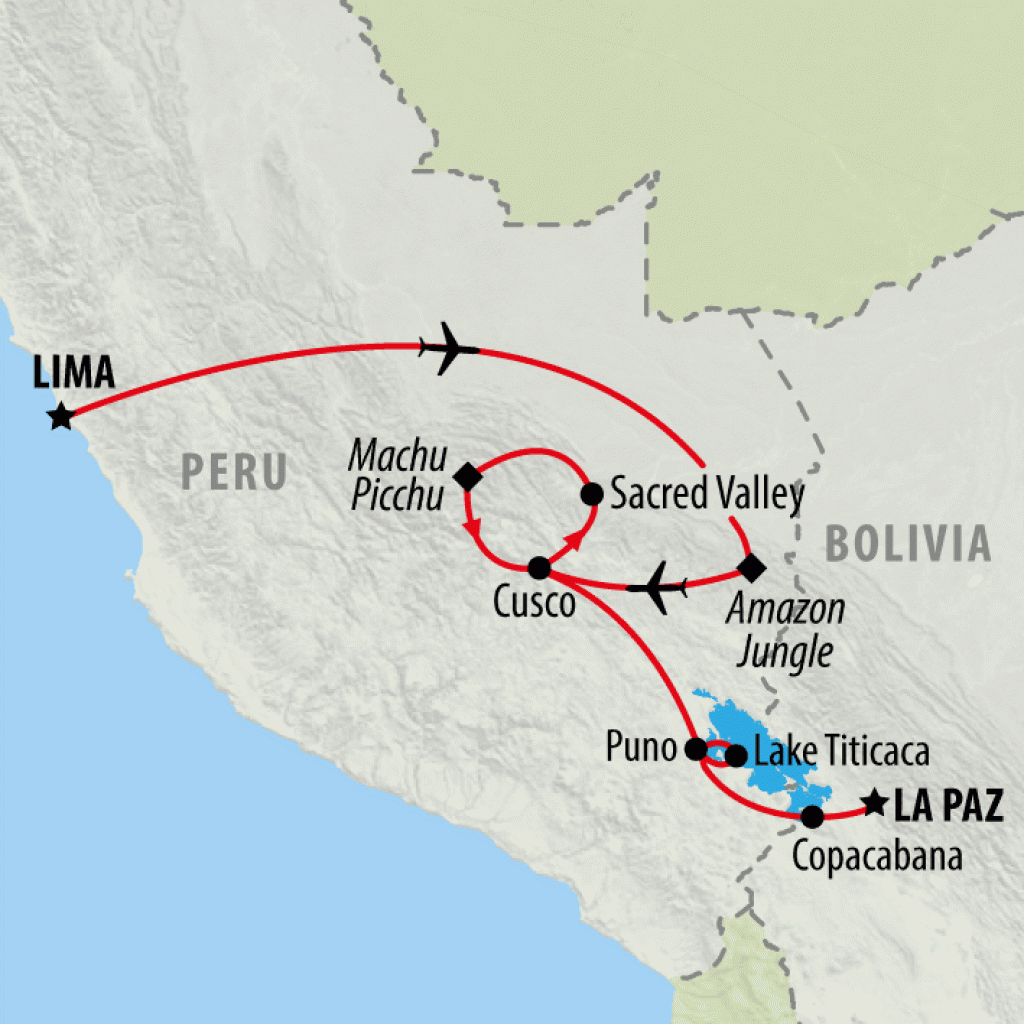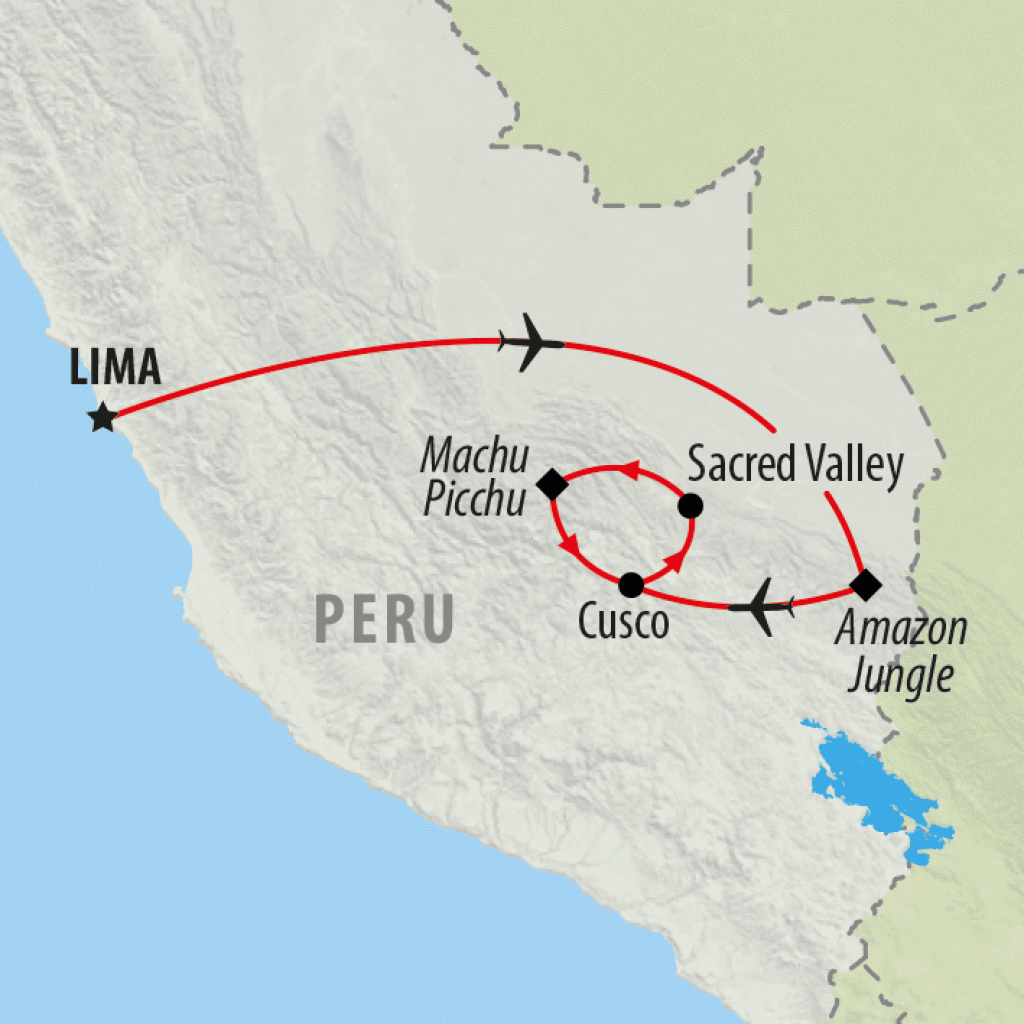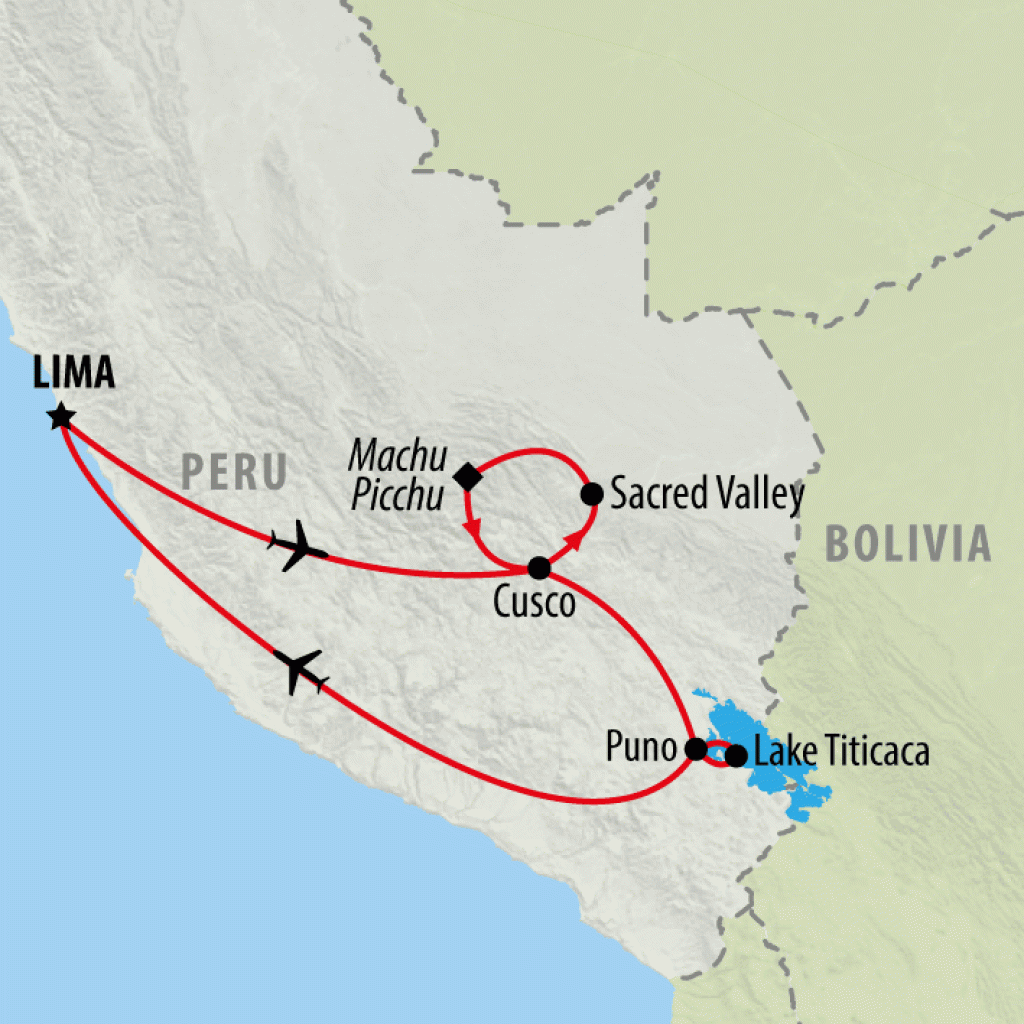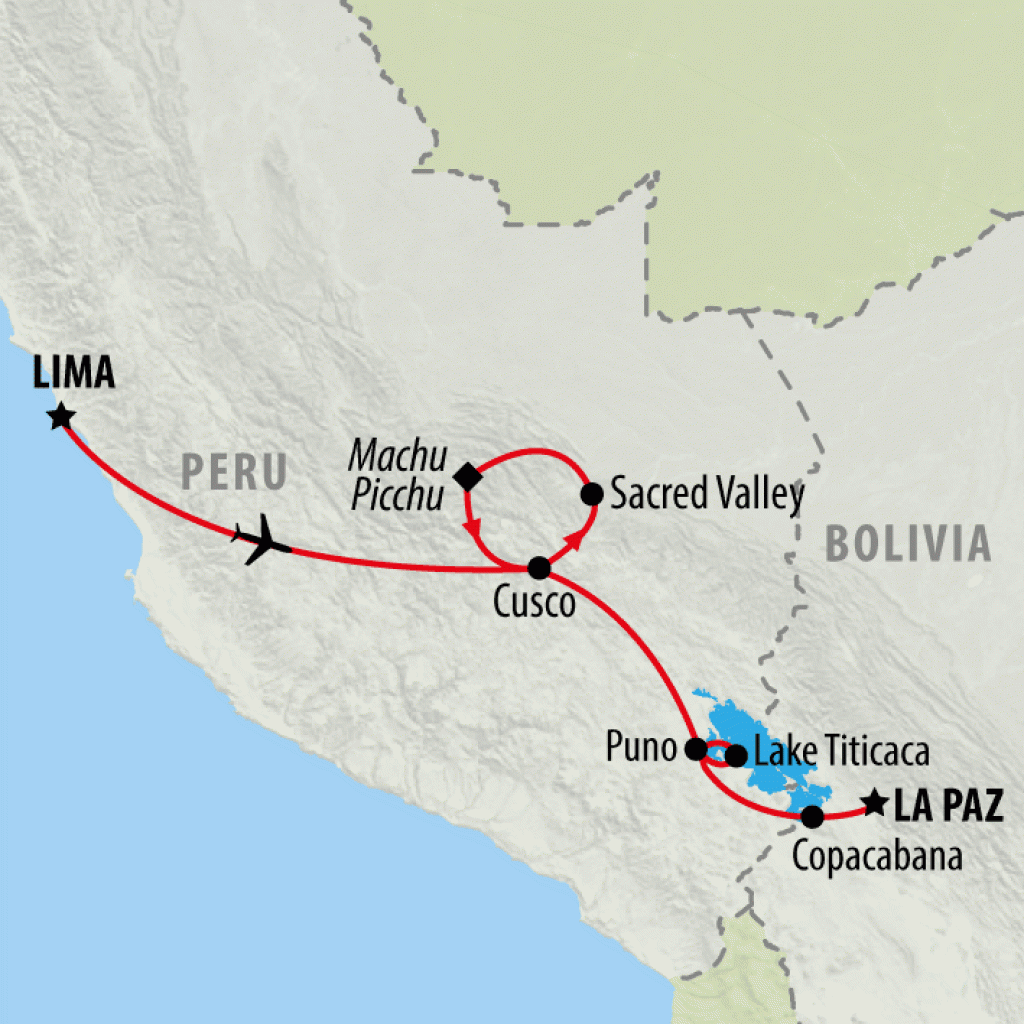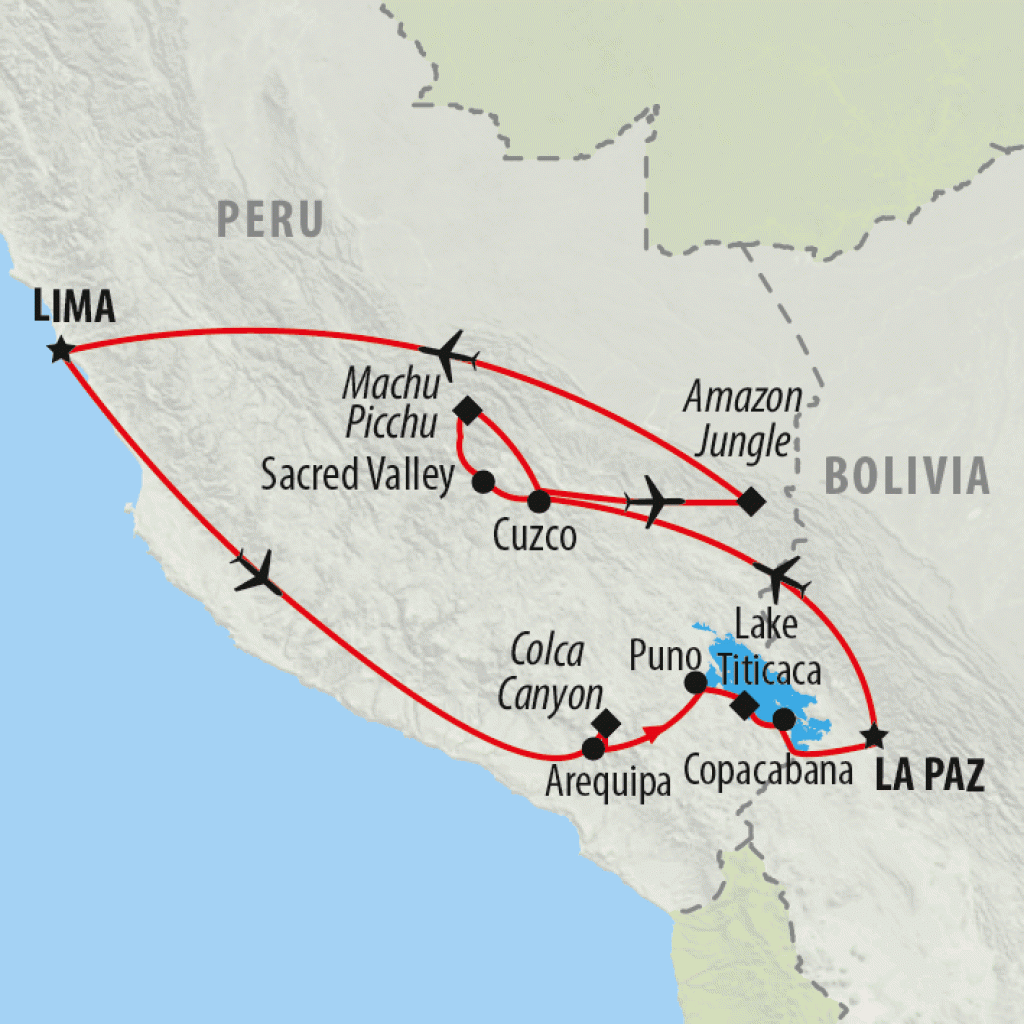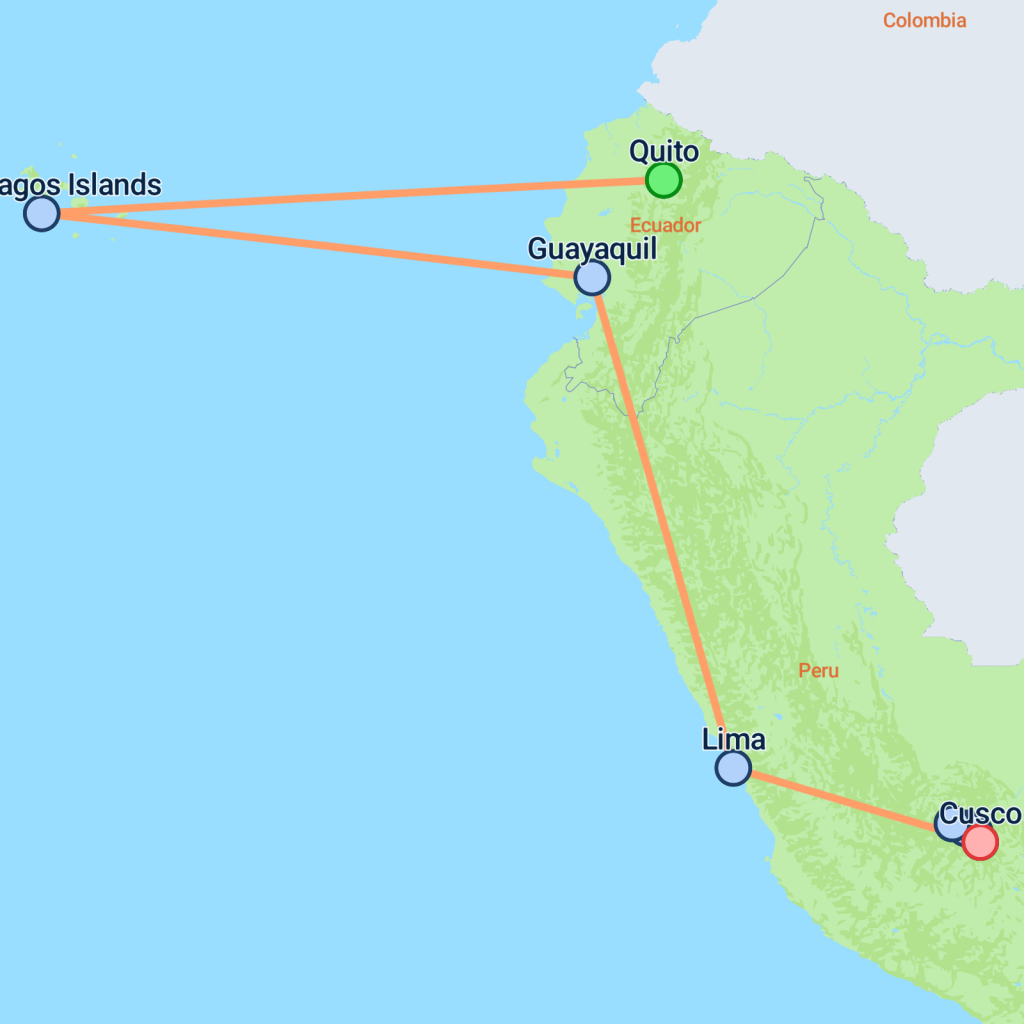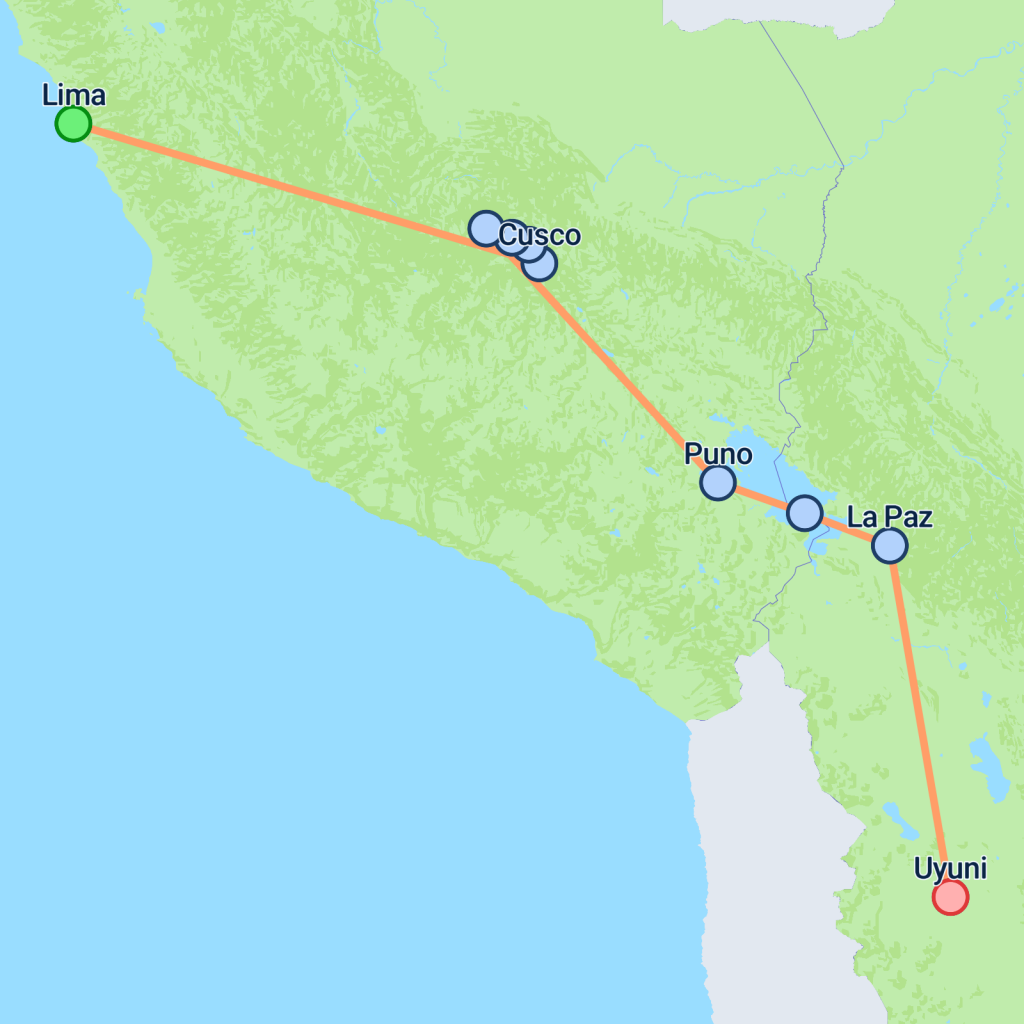The Inca Citadel
Once buried in jungle growth and only rediscovered in 1911, the incredible 'lost city' of Machu Picchu is South America's premier tourist attraction. The ancient Incan citadel enjoys a spectacular position on a dramatic mountain ridge overlooking the meandering Urubamba River. Standing at 2,430 meters above sea level, the site is often shrouded in early morning mists that slowly disperse to reveal beautiful stone architecture of palaces, temples, storehouses and terraces with hundreds of steep stairways connecting the structures. Remarkable terraces tumble down the precipitous slopes of the forested mountains, some of which have been brought back to life with present-day cultivation. No matter where you stand among the ruins you'll be confronted with breathtaking views of a vast open sky punctuated by the glacial peaks of the surrounding mountain range.
Dating back to the 15th century, the citadel of Machu Picchu is the Inca's finest urban creation. Inhabited for over a century, Machu Picchu was abandoned during the time of the Spanish conquest for unknown reasons. This remarkable site was left forgotten to the outside world until 1911 when American historian Hiram Bingham, with the aid of local indigenous farmers, found the relatively intact Machu Picchu on an expedition in search of lost Inca cities. Unsurprisingly, acclaim for Machu Picchu has skyrocketed since - it was listed as a UNESCO World Heritage Site in 1983 and voted one of the New Seven Wonders of the World in 2007. It is now Peru's most visited site.
Machu Picchu contains over 200 structures dedicated to religious, ceremonial, astronomical and agricultural functions and over a third of the site has been lovingly restored to help visitors envisage the true brilliance of citadel. The site can be roughly divided into an agricultural sector and urban sector with three primary structures offering limitless exploration - the Temple of the Sun, Intihuatana and the Sacred Plaza, though there's plenty else to fascinate you during your visit.
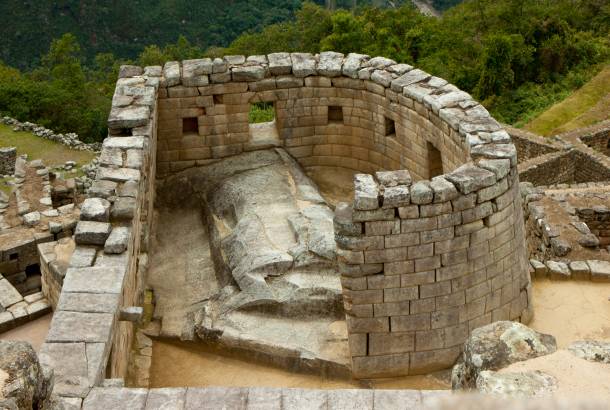
Temple of the Sun
The semi-circular Temple of the Sun displays some of the finest stonework found in Machu Picchu and would have served as the citadel's civic center -where only the most important events were held. Its history of religious rituals meant that numerous archaeological remains were discovered here, from ceramic vessels to silver statues. Many of which were held by Yale University until 2012, along with artifacts found throughout Machu Picchu, when they were returned to Peru and are now housed in the La Casa Concha (The Shell House) in Cusco.
The Torreon tower stands within the temple and marks the city's highest altitude (the Incas believed that being closer to the sun would help them contemplate heaven more easily), and may have been used as an observatory. Specially designed windows would have allowed the Inca priests to observe June solstice sunrise and the constellation of the Pleiades, whose return to the southern hemisphere each year marked the beginning of harvest. Even today this constellation is an important astronomical symbol for the Andeans.
The temple and its various structures exploit the terrain that surrounds it with a large granite rock that juts out from the mountain serving as the base of the complex. A small underground cavern known as the Royal Tomb lies beneath and temple and features excellent masonry works. Although no graves or human remains were found here, historians believe it may have served as the crypt for the mummified corpses of the city's most important residents. Further uphill from the Temple of the Sun is a track that leads to Intipunku, also known as the Sun Gate, where the Inca Trail enters Machu Picchu and affords stunning views across the whole site.
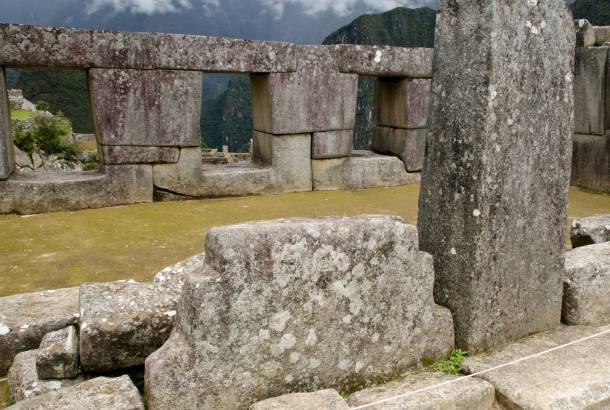
The Sacred Plaza
The four-sided Sacred Plaza is perhaps the most captivating area within the Machu Picchu complex and would have functioned as its political center. Some of Machu Picchu's most important buildings surround the Plaza, including the attractive Three-Windowed Temple (El Templo de Tres Ventana) and the Principal Temple (Templo Principal), which displays high walls and fine stonework. The site also contains three large and mysterious stones believed to have been used as altars.
There are also a significant number of terraces around the Plaza that may have provided seating for those attending important celebrations and festivals at the site, rather than having been used for cultivation as the terraces in the agricultural sector would have. Like every other structure at Machu Picchu, the Sacred Plaza's location was carefully thought out - the proximity to a stone quarry made its creation far easier and its high elevation enabled astronomic and religious practices to be carried out.
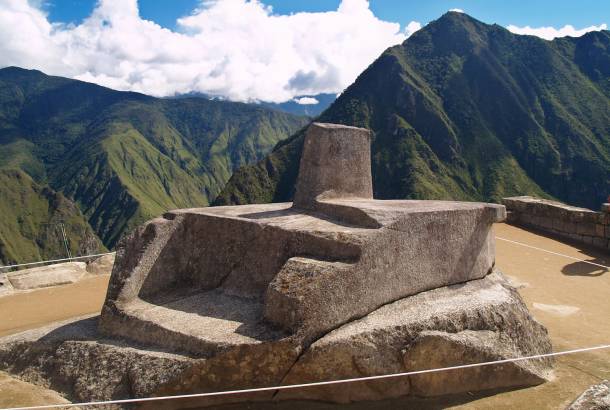
Intihuatana
Set on slopes in a pyramidal shape, the Intihuatana ritual stone is a fascinating carved rock designed to point directly at the sun during the winter solstice so that the sun casts no shadow at two points during the year. Known as the 'hitching post of the sun', the Incas believed that Intihuatana held the sun in position as it followed an annual path around the globe.
Built on a rise overlooking the Sacred Plaza, its location allows for impressive views over the Rio Urubamba and out to Huanya Picchu, the iconic peak that towers above the Machu Picchu ruins and appears in the classic image of the site. It appears that Intihuatana was positioned here in order to align with four important mountains - the La Veronica range to the east, Salcantay to the south, the important peak of Pumasillo to the west and Huanya Picchu to the north. Ritual stones such as Intihuatana have been found throughout South America but thanks to Machu Picchu's isolation this is one of the best preserved examples, left untouched during the Spanish conquest.
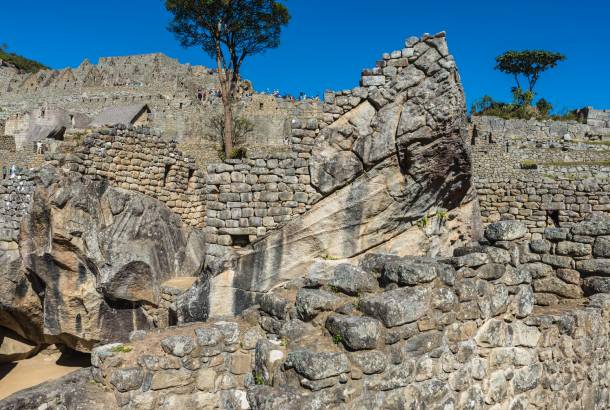
Temple of the Condor
Sculpted from a natural rock formation into the shape of a condor in flight with wings outstretched, the Temple of the Condor is an outstanding example of Incan stonemasonry. The Incas considered the condor sacred for its ability to fly and teach us the meaning of freedom - it represented the liberation of our soul from body and mind. The bird was also considered a divine representation of fertility and successful harvests as it was believed its flapping wings could gather clouds that would create the rain needed to grow crops. The condor's head and neck feathers are carved into the temple's floor to complete the image, and these features may have been used as a sacrificial altar. A prison complex stands behind the temple featuring a subterranean maze of dungeons where the accused would have anxiously awaited their fate.
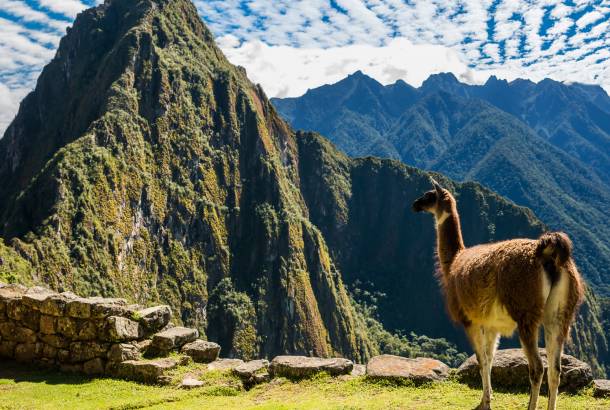
Huayna Picchu
The sacred peak of Huayna Picchu juts out above a bend in the Urubamba River and is accessible via a trail of steps that the Incas originally cut into the mountainside. Situated 20 meters above sea level, a number of temples and terraces are located on the summit of Huayna Picchu and would have served as the residence for the high priest and the local virgins. Only 400 people are allowed to climb the mountain each day at designated times - 7am and 10am. The vigorous climb up takes between 1-2 hours depending on your level of fitness but is well-worth the effort for the awe-inspiring panoramic views across Machu Picchu (on a clear day).
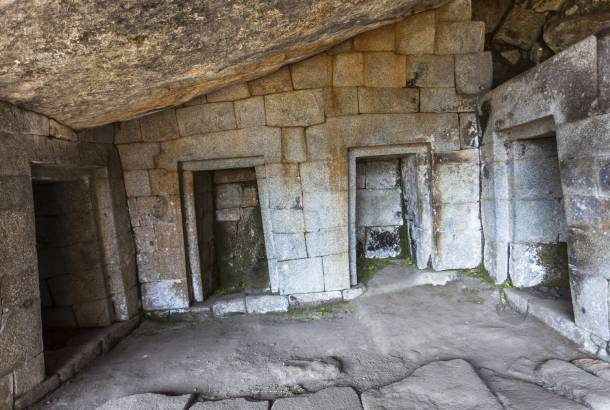
Temple of the Moon
Situated around a third of the way up on Huayna Picchu, the fascinating Temple of the Moon (Templo de la Luna) is tucked away in a grotto that seems to magically hang above the Rio Urubamba. Here you'll find some of the most striking stonework in all of Machu Picchu with a throne carved out of rock, stairways leading deeper into the cave and even phony doorways. In front of the cave there is a small plaza where an altar stands as well as a number of stone sanctuaries. The purpose of the temple is not entirely clear though it's believed to have been a place to worship the spirit of the mountain and its name is a reference to the way moonlight beautifully illuminates the cave at night.

The Train to Machu Picchu
There are many ways you can visit Machu Picchu - by train on a day's excursion from Cusco or at the end of a trek along the official Inca Trail. The incredibly scenic train journey winds its way through dramatic mountain ranges, past highland villages and impressive terraces. With large viewing windows, the train enables passengers to soak in these views, all from the comfort of well-kept carriages with air-conditioning and adjustable leather seats. There are complimentary snacks and drinks provided on board.
The train journey takes around 4 hours each way from Cusco so to make the most of your visit to Machu Picchu, we highly recommend you spend a night at the town of Machu Picchu Pueblo (also known as Aguas Calientes) to give yourself the best part of two days to explore. This also means you can get to Machu Picchu for sunrise when it opens at 6.30am and the mists slowly dissipate. On day 1 and on your arrival from Cusco you can explore the site of Machu Picchu, before climbing Huanya Picchu for the Temple of the Moon on day 2 and heading back to Cusco that evening. The Vistadome train also stops at Ollantaytambo in the Sacred Valley so if you'd like to explore this region whilst in Peru then it makes sense to spend a night here between Cusco and Machu Picchu. This is exactly what we do on our Machu Picchu by Train tour. Book tickets well in advance to ensure availability for the day you wish to visit.
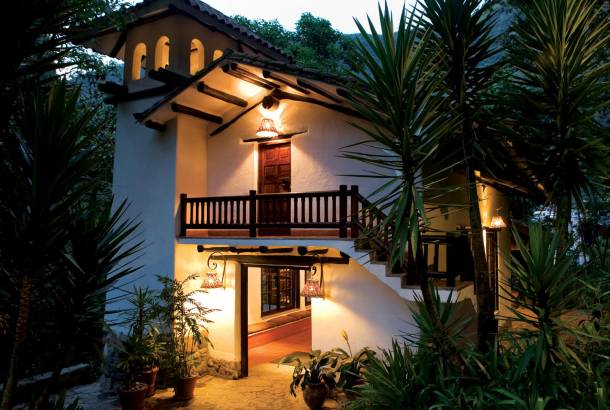
Staying at Machu Picchu
A number of excellent accommodation options are available in the spa town of Aguas Calientes, which is also referred to as Machu Picchu, and we recommend the following:
El Mapi - A stylish 3* hotel in the center of town. The light and airy rooms feature large windows displaying views of the forested mountains and eco-friendly amenities to continue the Inca tradition of working with nature, a tradition found throughout Machu Picchu. Guests can start their day with a nutritious buffet breakfast of organic and local ingredients including delicious smoothies and freshly made Belgian waffles. The perfect way to end the day is with a Pisco sour at El Bar, a comfortable lounge with free WiFi and daily happy hour.
Inkaterra Machu Picchu - This Andean village-style 4* property is set within 12 acres of secluded cloud forest. The casitas (bungalows serving as private guest accommodation) are designed with peace and serenity in mind with thick alpaca blankets, comfortable seating areas provided and spa-style bathrooms with environmentally-friendly toiletries. The hotel also boasts a first-class restaurant with stunning views of the Vilcanota River, a menu of contemporary Andean dishes and the luxury Unu Spa which features a unique sauna where stones are heated in a candle-lit eucalyptus hut.
Belmond Sanctuary Lodge - Surrounded by landscaped ponds with brilliant views of Huanya Picchu, this luxurious 5* hotel is the only hotel to be located right next to the entry gates to Machu Picchu, ideal for early morning access to the site. The cozy guestrooms are tastefully furnished with courtyard views and (more often than not) a patio with outdoor seats. The stylish Tampu Restaurant serves a fine selection of Peruvian and international cuisine with large sliding windows providing uninterrupted views of the surrounding jungle. The rustic stone interior of the Tampu Bar is a welcoming place to enjoy a cocktail at the end of the day.
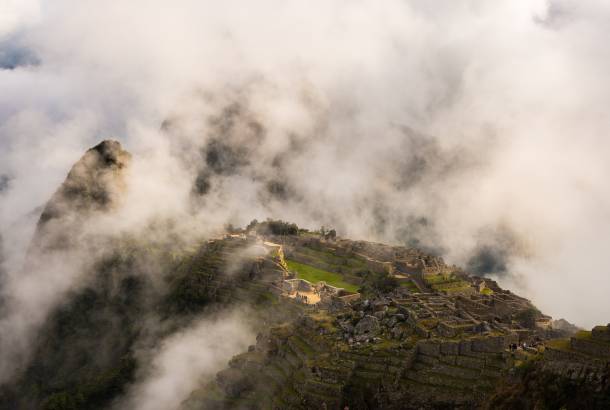
Best Time to Visit
Its location in the Andean foothills means that Machu Picchu can receive rain at any time of year, but the wet season between November and April brings the most rainfall making the stones of the ruins slippery to walk on with the possibility of mud slides. This time of year also means fog and thick clouds are more likely to obscure views across the site and out towards the surrounding mountain ranges. January and February tend to be the wettest months.
Between May and October the temperatures are pleasant with little rainfall and generally clear, bright days, perfect for panoramic views of Machu Picchu. The peak tourist season here is July and August when the weather is at its best and many countries around the world are on school holidays, resulting in high numbers of visitors. If you prefer to avoid the worst of the crowds and the worst of the bad weather then April and November are a good time to visit.
Machu Picchu is open from 6.30am to 5pm and busiest between 11am and 3pm when day trippers arrive from Cusco. Reaching the complex first thing in the morning means you can catch the sunrise and share the experience with the Inca Trail trekkers just arriving after 3 days hiking. Towards the last few hours of the day the crowds do thin out and those left prefer a more leisurely walk around the site so this is a nice time to visit. Early morning and late afternoon are also the best time for photography with softer lighting conditions.
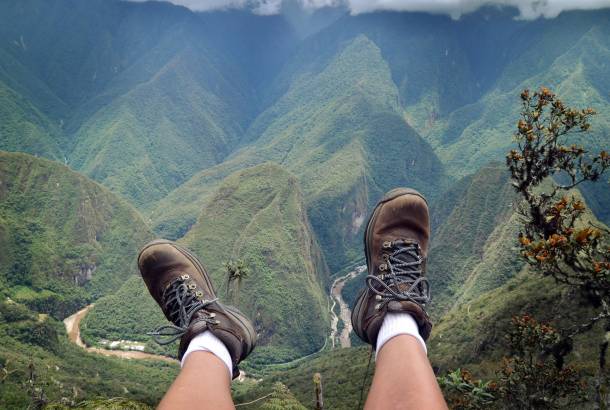
Tips for Visiting Machu Picchu
A trip to Peru and the awesome citadel of Machu Picchu is a once-in-a-lifetime experience so to help your holiday planning we've put together our top tips for making the most of the site.
- Bring a rain jacket - the mountain climate means it could rain on any day and you won't want to be caught by surprise and spend the rest of the day soaked through.
- Wear good quality hiking shoes, especially if you're considering climbing Huayna Picchu, which has steep slopes and requires some scrambling in sections. If you want to climb Huayna Picchu book in advance as tickets are limited.
- Bring layers as it can get cold at this altitude, as well as a hat, sunglasses and sunscreen to protect you from the sun. It's also wise to take a good insect repellent as pesky sandflies hang around the site.
- You'll need to have your passport on you to enter the Machu Picchu site.
- Book Vistadome train tickets as early as possible - seats often book out months in advance.
- Those on a budget can take the cheaper Expedition train to Machu Picchu and still enjoy panoramic views throughout the journey. For those looking for more luxury, consider taking the Hiram Bingham luxury train owned by the Orient Express Group which offers an all-inclusive service.
- You can spend a maximum of 4 hours at Machu Picchu so if you'd like longer, spend a night and visit over the course of two days to see the ruins in different weather conditions and light for a greater range of photography opportunities.
- If you're spending the night in Aguas Calientes, bring your bathers and relax in the thermal springs after which the town is named.
- If your Peru trip starts in either Lima or Cusco and you would rather limit the ill effects of altitude sickness, instead of spending time in Cusco first and then visiting Machu Picchu - head straight to Machu Picchu - spend a night here, another night in the Sacred Valley and then end in Cusco for a few nights. Cusco sits at an altitude of 3,330 meters above sea level and if this is your first stop in Peru, or even after Lima (only 1,550 meters above sea level), then it's likely you'll suffer in some capacity. Machu Picchu sits at 2,450 meters and Ollantaytambo (in the Sacred Valley) at 2,790 meters so following this itinerary allows you to slowly acclimatize.



































